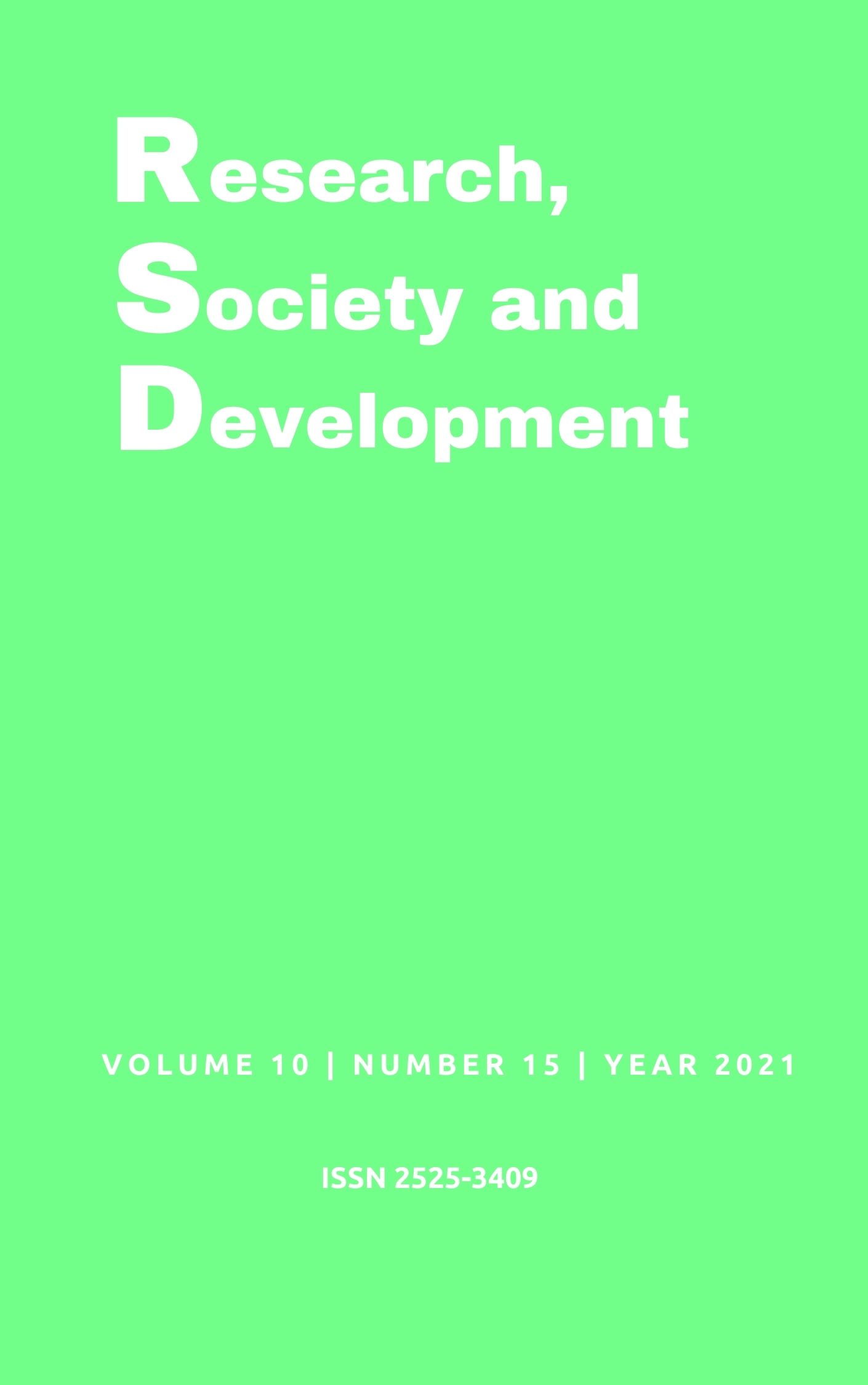Acoustic monitoring in classrooms and computer laboratories
DOI:
https://doi.org/10.33448/rsd-v10i15.22452Keywords:
Intelligibility, Acoustic monitoring, Classroom.Abstract
Although noise is present in most daily activities, its exposure brings harm from different spheres to human beings. In a school environment, their performance represents an invisible opponent of teaching/learning behavior, as it competes with the attention that the student should devote only to the teacher's explanation. Thus, the student is submitted to two different stimuli: the main one, characterized by the teacher's speech and which needs a good condition of intelligibility to be the focus of their attention; and the secondary, shaped by the competitive noise, which the student must be able to neglect, so that the explanation is not distorted and does not compromise the understanding of the main message. It is in this context that the present study aims to present acoustic monitoring data in classrooms and computer labs of the Federal Institute of Paraná (IFPR), Campus Umuarama. It was found that the sound pressure levels (SPL) are not in accordance with the acceptable limits for the respective spaces, recommended by the Brazilian standards that deal with the subject, and possible materials that contribute to the improvement of the acoustic conditioning of these environments were presented. schoolchildren. Finally, it was observed, among other items, that the classrooms presented SPL above the permitted level, especially the rooms with doors exposed to large circulation of people.
Downloads
References
Associação Brasileira de Normas Técnicas (2000). NBR 10151: Avaliação do Ruído em áreas habitadas, visando o conforto da comunidade – procedimento. Rio de Janeiro, 2000, 4 p.
Associação Brasileira de Normas Técnicas (1987). NBR 10152: Níveis de ruído para conforto acústico. 1987, 4 p.
Bentler, R. A (2000). List equivalency and test-retest reliability of the speech in noise test. American Journal of Audiology, 9(2), 84-100. https://pubs.asha.org/
Bistafa, S. R (2018). Acústica aplicada ao controle do ruído. (3a ed.), Edgard Blucher.
Brandão (2016). E. Acústica da sala: projeto e modelagem. Edgard Blucher.
Câmara Brasileira da Industria da Construção (2013). CBIC. Desempenho de edificações habitacionais: guia orientativo para atendimento à norma ABNT NBR 15575/2013. Fortaleza: Gadioli Cipolla Comunicação, 2013.
Costa, M. T. D., Martins, Éder J., Rocha, A. C., Garcia, D. C. N., Oliveira, I. de, Lima, P. P. de S., & Silva, V. R. da (2018). O impacto ergonômico do ruído em docentes da rede pública. Research, Society and Development, 7(5), e775160, 10.17648/rsd-v7i5.249, https://rsdjournal.org/index.php/rsd/article/view/249.
De Castro, A. C. L., Fontes, K. D. de S. A., & Ferreira, T. E. D., Gontijo, H. M. (2019) Abordagem do impacto do ruído ambiental nas escolas públicas do município de João Monlevade - MG. Research, Society and Development, 8(3). e1683716. 10.33448/rsd-v8i3.716, https://rsdjournal.org/index.php/rsd/article/view/716.
Dreossi, R. C. F. & Momensohn-Santos, T. M (2000). A interferência do ruído na aprendizagem. Revista Psicopedagogia, 21(64), 38-47. https://pubs.asha.org/
Dreossi, R. C. F. & Momensohn-Santos, T. M (2005). O Ruído e sua interferência sobre estudantes em uma sala de aula: revisão de literatura. Pró-Fono Revista de Atualização Científica, 17(2), 251-258, https://www.scielo.br/pdf/pfono/v17n2/v17n2a13.pdf
Fidêncio, V.L.D, Moret, A.L.M & Jacob, R.T.S (2014). Measuring noise in classrooms: a systematic review, CoDAS,26(2):155-8.
Gerges, S. N. Y (1992). Ruído, fundamentos e controle. Biblioteca Universitária Feder.
Gil, A. C (2009). Como elaborar projetos de pesquisa. (4a ed.), Ed. Atlas.
Guidini, R. F., Bertoncello, F., Zancheta, S. & Dragone, M. L.S (2012). Correlations between classroom environmental noise and teachers’ voice. Rev Soc Bras Fonoaudiol. 17(4):398-404).
Halliday, D., Resnick, R. & Walker, J (2014). Fundamentals of Physics. (10th ed.), John Wiley& Sons.
Hans, R. F (2001). Avaliação de ruído em escolas. Revista tecnologia e tendências. UFRSPROMEC.
Okuno, E., Caldas, I. L., & Chow, C (1982). Física para Ciências Biológicas e Biomédicas. Harbra.
Rabelo, A. T. V.., Guimarães, A. C. F., Oliveira, R. C., Fragoso, L. B. & Santos, J. N (2015). Avaliação e percepção docente sobre os efeitos do nível de pressão sonora na sala de aula. Distúrbios Comun. 27(4): 715-724.
Roth, L. M (2017). Entender a arquitetura: seus elementos, História e Significado. Joana Canêdo. Gustavo Gili.
Silva, L. F. & Moraes, R. G (2009). Análise da qualidade acústica das salas de aula das escolas públicas municipais de Itajubá-MG. Rev. Tecnol. Fortaleza, 30(2), 175-187.
Souza, L. C. L, Almeida, M. G. & Bragança, L (2016). Bê-á-bá da acústica arquitetônica: ouvindo a arquitetura. EduUFSCAR.
Tavares, M. S. A, Silva, L. B & Souza, E. L (2017). Um panorama dos níveis de ruído para conforto acústico de ambientes de ensino com VDT em áreas das regiões brasileiras. Revista Produção Online. 17(4), 1402-1434.
Tipler, P. A. & Mosca, G (2015). Física para cientistas e engenheiros: mecânica, oscilações e onda, termodinâmica. (6a ed.).
Downloads
Published
Issue
Section
License
Copyright (c) 2021 Grasielle Cristina dos Santos Lembi Gorla; Joyce Ronquim Wedekind; Gustavo Silva Veloso de Menezes; Otávio Akira Sakai

This work is licensed under a Creative Commons Attribution 4.0 International License.
Authors who publish with this journal agree to the following terms:
1) Authors retain copyright and grant the journal right of first publication with the work simultaneously licensed under a Creative Commons Attribution License that allows others to share the work with an acknowledgement of the work's authorship and initial publication in this journal.
2) Authors are able to enter into separate, additional contractual arrangements for the non-exclusive distribution of the journal's published version of the work (e.g., post it to an institutional repository or publish it in a book), with an acknowledgement of its initial publication in this journal.
3) Authors are permitted and encouraged to post their work online (e.g., in institutional repositories or on their website) prior to and during the submission process, as it can lead to productive exchanges, as well as earlier and greater citation of published work.


